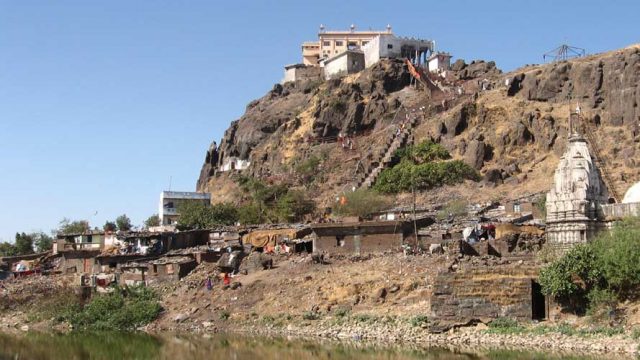Champaner, a medieval capital of Gujarat, is India’s only complete and unchanged pre-Mughal Islamic city. It has magnificent mosques and the remains of palaces, homes and water works, from the 8th to 14th centuries. In fact, the forgotten city of Champaner-Pavagadh was designated a World Heritage Site in 2004.
THINGS TO SEE AND DO
Pavagadh mainly sees a stream of pilgrims who tread the path up Pavagadh hill, south west of town, to visit the Lakulisha and Kalikamata temples at the summit, while Champaner has a plethora of archaelogical treasures. Continually settled since prehistoric times, in 1515, the Portuguese traveller Duarte Barboza described it as the most delightful place on earth, a settlement of Persian-inspired royal gardens and ornate water structures such as stepwells. But a century later, the Arab historian Sikandarbin-Manzhu recorded that the town was already in ruins during Jehangir’s reign. Many buildings were buried under dense vegetation in subsequent centuries.

Pavagadh’s stunning Khapra Zaveri no Mahal has no foundation and was built directly on the rocks over the ravine. An excavation in the 1970s unearthed almost 2,000 buildings including the meticulously designed nobleman’s residence, Amir ki Manzil, which has rooms with open water channels, a terrace garden, servants’ quarters and stables. Perhaps the most ambitious of the constructions here is the seven rings of fortifications – with an ingenious network of gateways, watchtowers, garrisons and barracks – that rise up the hill. Walk along the labyrinthine fort walls from Khapra Zaveri to the Sat Kaman, a series of seven arches (one has fallen) built of local yellow sandstone. The arches support high walls resembling a bastion, which contain large openings that were used to dispense gun powder. Built by the Khichi Chauhan Rajputs in the 13th century, the stone-and-brick fort walls secured the kingdom of Pavagadh against more than a dozen attacks by the Gujarat Sultans throughout the 15th century. At the Shahi Masjid, a private mosque for the royal family, the outer walls feature stone jharokas with perforated lattice work. In the prayer hall, five mihrabs, or carved niches, are adorned with motifs derived from Rajput havelis. The carved friezes on the ceiling include the Jain motif of the kalpavriksha or tree of life. The royal mosque is housed within the Hissar-i-Khas or Royal Enclosure, which also had palaces, and baradaris or pleasure pavilions. To explore the archeological site, you can request a guide by contacting the manager of Hotel Champaner.
WHERE TO STAY AND EAT
Accommodation at the site is restricted to Gujarat Tourism’s Hotel Champaner (Cell: 09727723938).
When to go Novermber to February Location 147 km SE of Ahmedabad Air Nearest airport: Vadodara Rail Nearest rail: Vadodara




